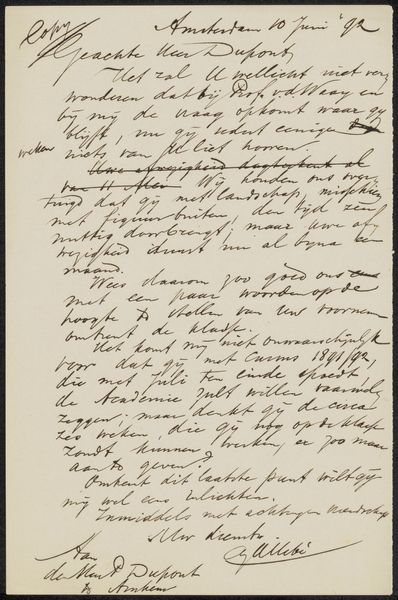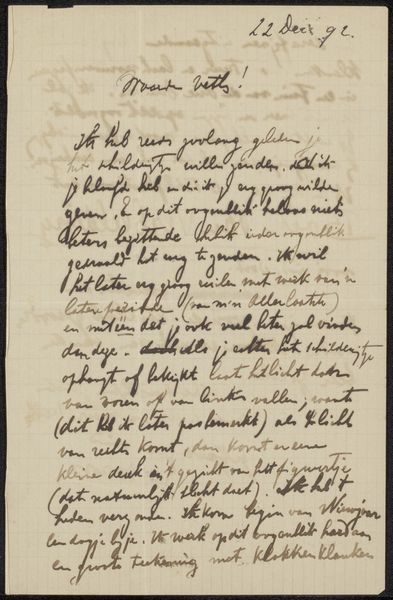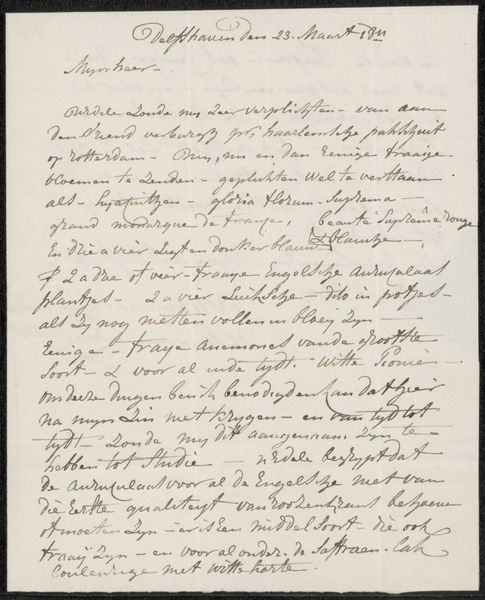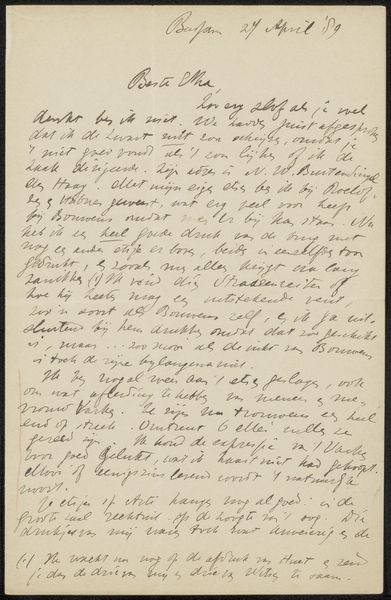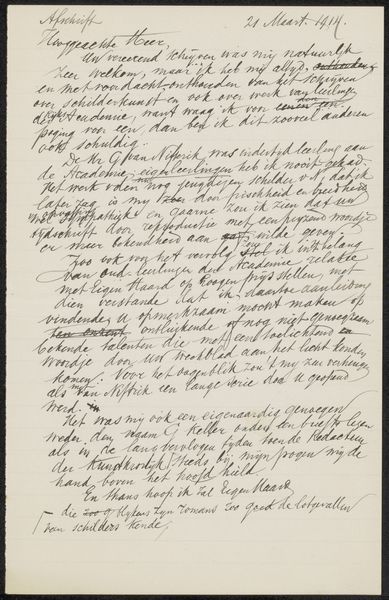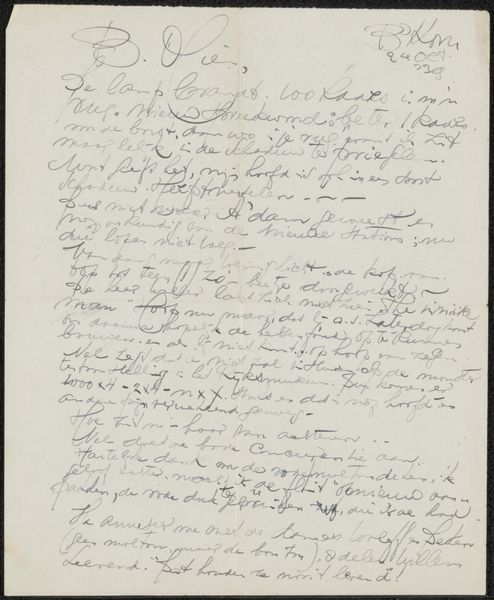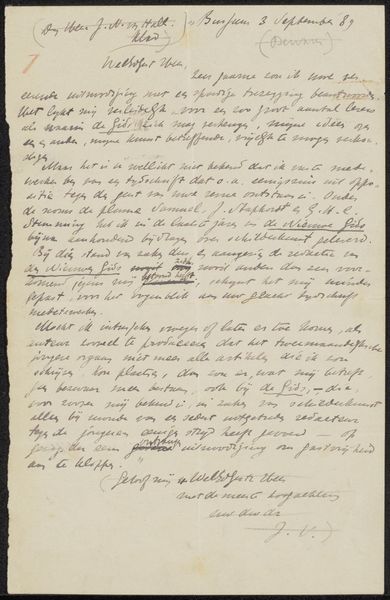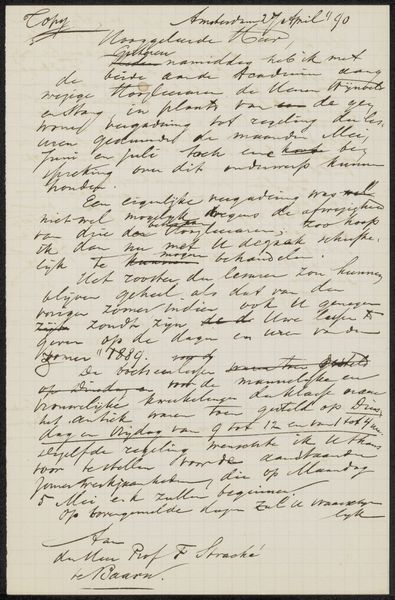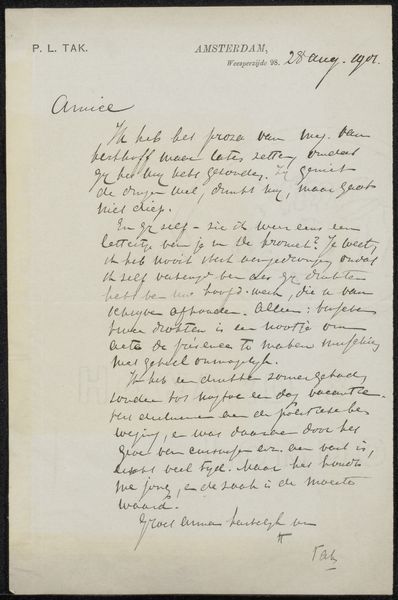
drawing, ink, pen
#
drawing
#
hand-lettering
#
hand drawn type
#
hand lettering
#
personal sketchbook
#
ink
#
hand-drawn typeface
#
ink drawing experimentation
#
pen-ink sketch
#
pen work
#
sketchbook drawing
#
pen
#
sketchbook art
#
modernism
#
calligraphy
Copyright: Rijks Museum: Open Domain
Editor: We're looking at "Conceptbrief aan Jan Veth en conceptbrief aan anoniem" – seemingly a draft or sketch of a letter by August Allebé, dated possibly 1918. It’s ink on paper, with a really fascinating, almost frenetic, calligraphic style. It feels very personal. What draws your attention to this particular piece? Curator: The intimacy you perceive is key. These aren't just letters; they’re artifacts of artistic dialogue. Allebé, a prominent figure in Amsterdam Impressionism, is here engaging in the social networks crucial to an artist’s career. We see a direct connection to Jan Veth, an influential critic. Editor: So, it's not just the aesthetic of the handwriting, but the act of correspondence that's important? Curator: Precisely. The act of writing and sending becomes a crucial means to negotiate artistic reputations. Consider the institutional landscape: museums, galleries, critics like Veth – all gatekeepers. Allebé, through this letter, is actively positioning himself within that network. How does this informal document relate to Allebé's public persona? Editor: That’s a good point. This gives us a glimpse into the behind-the-scenes maneuvering. The mention of catalogues… it makes me wonder about exhibition politics at the time. Curator: Exactly. Allebé wasn't just creating art in isolation; his work was entangled in a complex web of social relations and institutional power structures. Editor: It’s almost like a social media post of its time, right? A way to maintain connections and shape your public image? I never thought about it that way before. Curator: Absolutely! Examining these connections illuminates how art history is actively shaped through these networks, impacting not only individual careers but the public role of art itself. Editor: This has given me so much to think about! It’s fascinating how a simple letter can reveal so much about the art world's machinery. Curator: Indeed. By recognizing these behind-the-scenes interactions, we start to understand the politics embedded within the art we study.
Comments
No comments
Be the first to comment and join the conversation on the ultimate creative platform.
